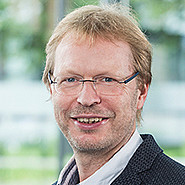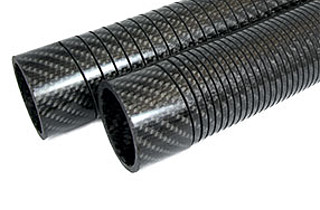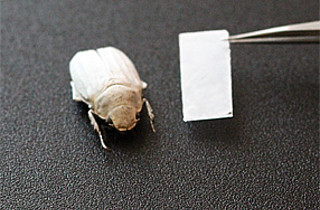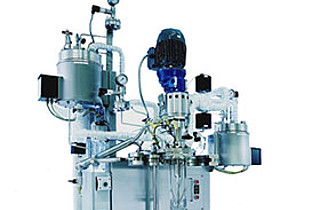Polyhedral deformation of metal panels with differential pressure
Surfaces are an indispensable design element in architecture, interior design and furniture design. Metal surfaces in particular lend facades, wall and door coverings or cabinets a noble appearance. If they can be individually designed, the products become valuable unique specimens.
State of the art
Metal plates are conventionally formed using the deep-drawing process. Due to the enormous forces involved, large, heavy molding presses are used, which are equipped with molds and patrices. To amortize the forming tool, the production of large quantities is required. The usual machine dimensions limit the component or product formats. There is no scope for individual design or large-area parts this way.
Technology
Researchers at the Research Center for Steel, Timber, and Masonry (VAKA) at KIT have developed a novel forming process that provides cladding sheets with a polyhedral surface design in an automated, fast, and reproducible way. The starting material of the semi-manufactured products are aluminum or aluminum composite panels into which straight or curved notches are mortised on the back. The semi-manufactured product is then folded into a cassette component, clamped in a differential pressure chamber and subjected to positive or negative pressure over its entire surface on one side. As a result, the semi-manufactured aluminum product reshapes to form buckling folds along the notches and forms a polyhedral topography. When the panel is processed again with positive or negative pressure in the opposite direction, parts of the polyhedral surface deform in the opposite direction. Depending on the pressure level and alternating pressure sequences, individual patterns can be produced with the same notch template.
Advantages
Due to the low resulting forces between one and five bar, heavy forming tools are not required. The differential pressure chamber can be easily and individually adapted. Individual pieces can thus be produced at low cost. Product dimensions are limited only by the available formats of the semi-finished products. The design and application horizon expands enormously compared to the conventional forming method with very low initial investment.
Options for companies
The new forming process may be used in the future for special applications, but also in mass production. KIT is looking for partners from the fields of architecture, design, and art for the realization of pilot projects.
Your contact person for this offer

Innovation Manager Karlsruhe Institute of Technology (KIT)
Innovation and Relations Management (IRM) Phone: +49 721 608-25587
Email: rainer.koerber@kit.edu






